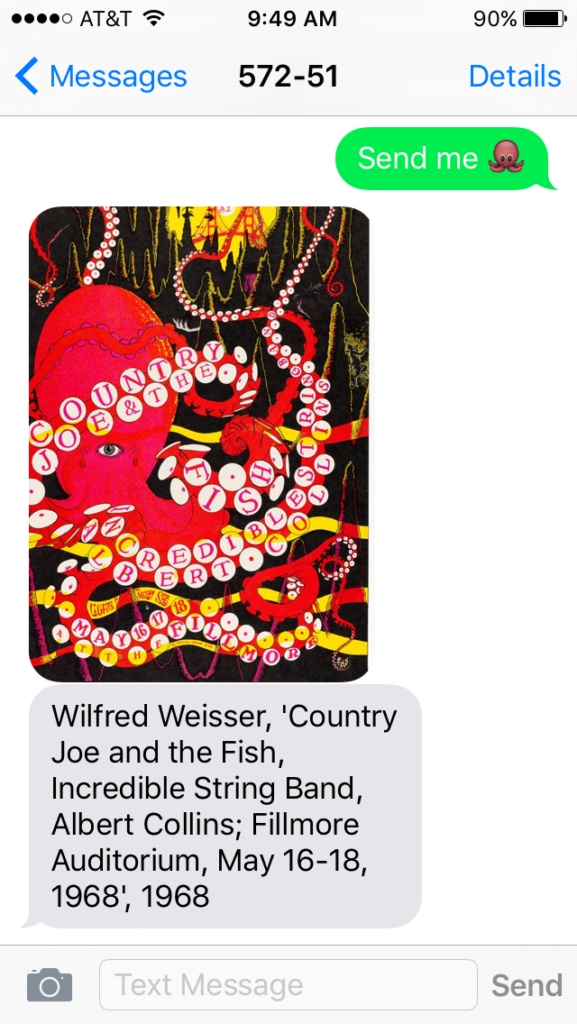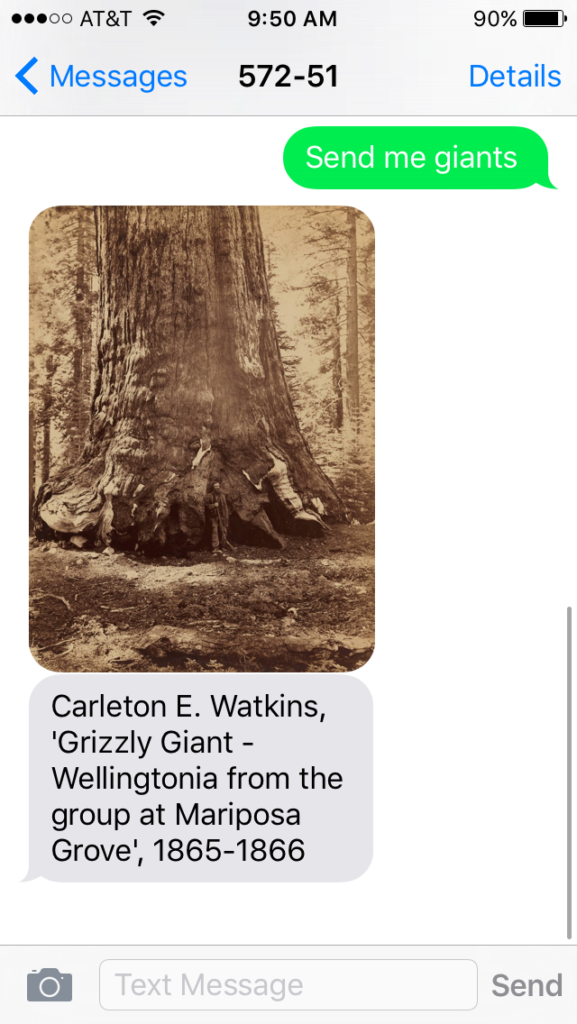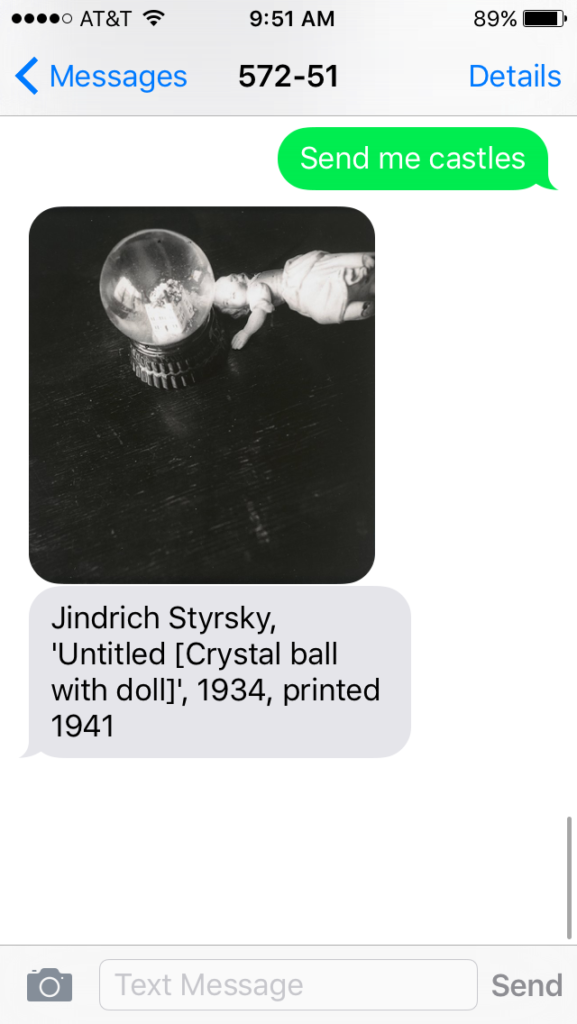Art World
How San Francisco’s Museum of Modern Art Used Text Messages to Make Art Go Viral
With a little help from Neil Patrick Harris, the museum's on-demand art-texting experiment has become a viral sensation.

With a little help from Neil Patrick Harris, the museum's on-demand art-texting experiment has become a viral sensation.

Think you get a lot of text messages? The San Francisco Museum of Modern Art (SFMOMA) has gotten two million this week.
The museum’s new Send Me SFMOMA project—which sends works from its 34,678-piece collection to anyone in the world via text message—is a decidedly modern method of sharing its art with the public. In recent weeks, it has also become a viral success.
Anyone can take part, by texting 572-51 with the message “send me” followed by a short description of what you’re in the mood to see. This could be an emoji, a color, or a keyword—just type whatever you’re craving at the moment, and the result will be art to match. A trial run in March proved so popular that mobile carriers blacklisted the number, suspecting it was spam.
The project officially kicked off in June and has become a sensation. When actor Neil Patrick Harris tweeted about the project to his 26 million followers on Tuesday, the museum had so much demand that its servers crashed, according to Gothamist.
“It started out as an experiment and quickly went viral, revealing a deep appetite for art among the public. We hope to provide Send Me SFMOMA as long as the public embraces it,” a museum spokesperson told Gothamist.

A message from Send Me SFMOMA. Screenshot courtesy of Sarah Cascone.
Send Me is a response to a genuine problem. Even if you carefully peruse each SFMOMA gallery—a task that would require walking seven miles, and take nearly three days if you looked at each work for a mere seven seconds—you’re only seeing about five percent of the institution’s collection. The rest of their vast holdings remain in storage, even following the museum’s recent expansion.
Jay Mollica, the museum’s creative technologist, spearheaded the project, creating a public Application Programming Interface (API) that allows users to request and receive data from the collection. Send Me is free, although standard text messaging rates apply.

A message from Send Me SFMOMA. Screenshot courtesy of Sarah Cascone.
On the SFMOMA website, Mollica described Send Me as “an SMS service that provides an approachable, personal, and creative method of sharing the breadth of SFMOMA’s collection with the public,” and was designed to generate personal connections to the museum “in a world oversaturated with information.”
But if Send Me promises to bring curated art to your phone, don’t expect requests for particular artists to deliver their artwork. Entries for major artists often return no response. In an email, Keir Winesmith, head of web and digital platforms at SFMOMA, told artnet news that this was by design.
“Most people who search the online collection on sfmoma.org use the name of an already famous artist as their search term. Send Me SFMOMA isn’t a search engine,” he said. “With Send Me we intentionally created something that would ask people to request artworks in a different way, and in the process discover artists and artworks they weren’t familiar with.”
Winesmith believes that element of surprise is one of the reasons the project has been so well received. And users seem to be falling in line. Among the most-requested terms, no artist cracks the top 10. According to Gothamist, the most popular requests are love, happiness, flowers, dogs, cats, ocean, San Francisco, food, and music.
Whether or not Send Me serves up one of the highlights of the museum’s collections or a little-known gem that might not be seen by the public for decades to come, the project is making art go viral in the best possible way.